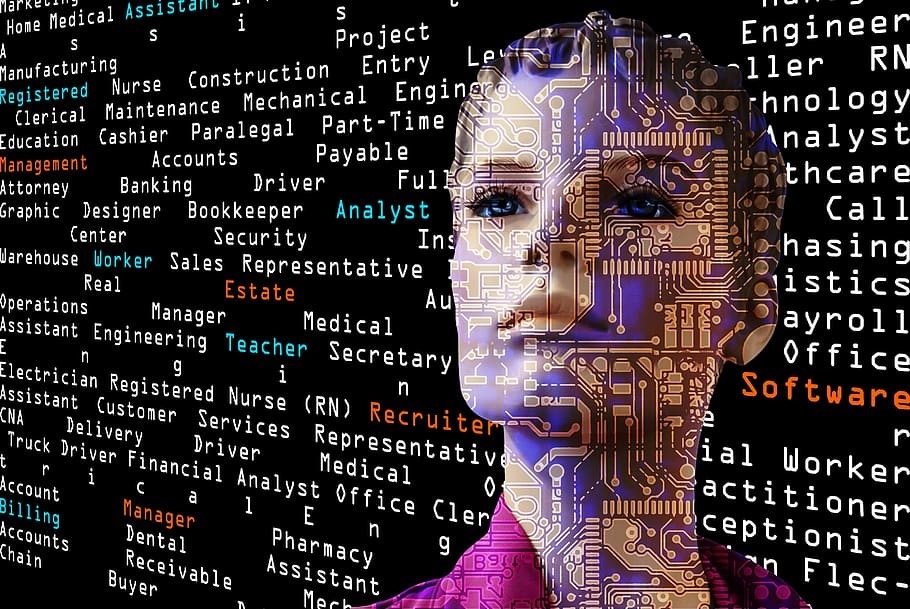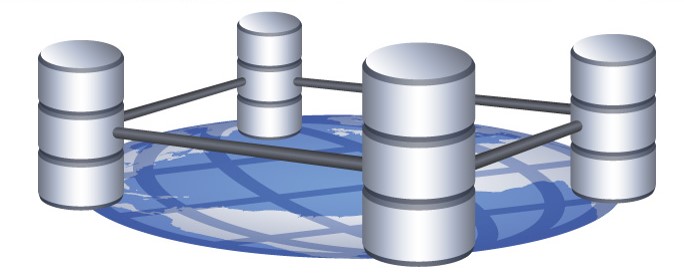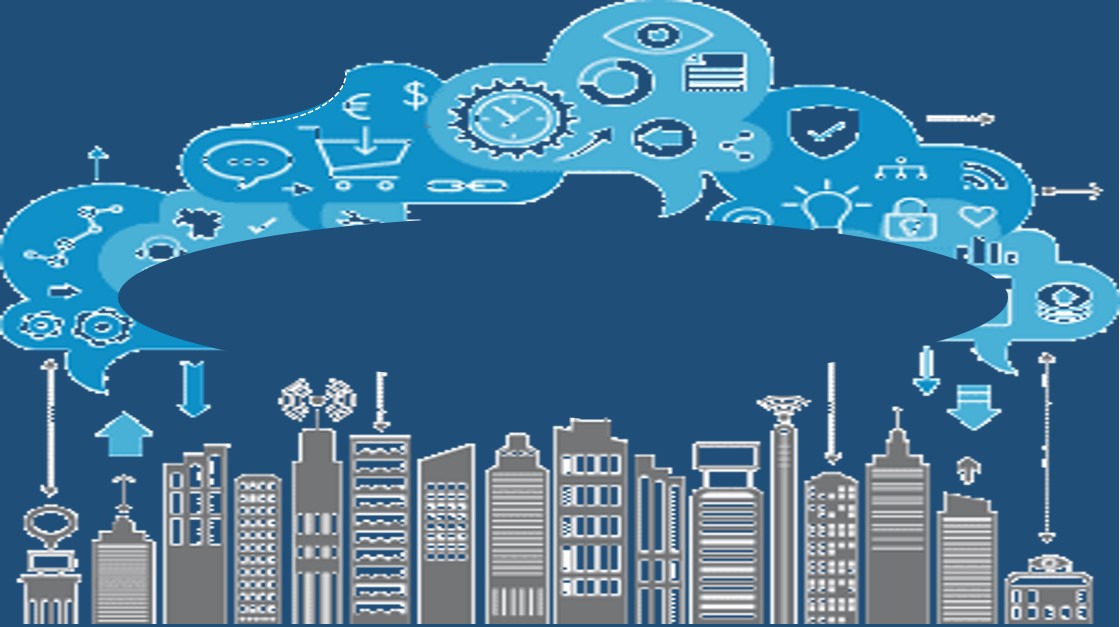Information Infrastructure
 i3 is an independent data fabric. It is independent of the applications that consume information and the applications/devices that produce data. It is used to manage and provide data governance as data flows through the data infrastructure on its path from data producers to information consumers. i3’s position as an independent integration platform means there are no restrictions on the sources or destinations of the information; customers are free to data systems from any supplier they wish and they can even integrate with home-grown applications and customized devices.
i3 is an independent data fabric. It is independent of the applications that consume information and the applications/devices that produce data. It is used to manage and provide data governance as data flows through the data infrastructure on its path from data producers to information consumers. i3’s position as an independent integration platform means there are no restrictions on the sources or destinations of the information; customers are free to data systems from any supplier they wish and they can even integrate with home-grown applications and customized devices.
A data stream connects authorized data sources with their approved destinations and provides record-keeping services so it is clear which parties accessed which information and when. The information generated by one application (or many IoT devices) can be reused/leveraged for use with many other information consumers’ optimal efficiency. And, applications have easy access to a library library of authorized data sources. Throughout the process, the data owner is kept informed of data usage and remains in control of how their data is distributed throughout the organization or a multi-party ecosystem.
i3 has made it easy to insert its information management/governance system into an existing systems architecture. It has also made it easy for that architecture to evolve as new data sources are incorporated into the information infrastructure. Information flows tend to be more dynamic than network connectivity so flexibility and adaptability is an important aspect of i3’s overall design.
Easy-to-use i3 software libraries can easily connect existing data sources into the i3 data fabric with a couple of lines of code. By the same process, applications can easily be linked to the i3 data fabric in order to gain easy access to a treasure of information. Once an i3 system has been integrated into the organization’s infrastructure, data streams can be activated or terminated with a few clicks of a mouse. Gone are the days when every integration effort became an arduous IT ordeal to deploy and support.
Because of i3’s position in the infrastructure, above the data connectivity network and below the applications layer, it becomes a small but critical element of the larger infrastructure structure. It serves as a gateway that feeds information to a range of applications including AI systems, Data Lakes and Databases, Digital Twins and the Metaverse, and IoT Systems. With i3 in place, it becomes easier for these systems to gain access to the information they need to succeed and i3 becomes a key enabler as we evolve toward a more integrated and connected information economy.
Artificial Intelligence
 Generally speaking, Artificial Intelligence (AI) software systems are based on models and rules. These systems accept information from a variety of sources and use their rules to determine if an event of interest has occurred. When such an event is found, the rule engines also specify how the AI system should respond to alert operations, generate reports, and react to changing conditions.
Generally speaking, Artificial Intelligence (AI) software systems are based on models and rules. These systems accept information from a variety of sources and use their rules to determine if an event of interest has occurred. When such an event is found, the rule engines also specify how the AI system should respond to alert operations, generate reports, and react to changing conditions.
The value of any AI system is limited or enhanced by the information available to these sophisticated software systems. More information implies better insights and more value from the AI engine. When an AI engine is configured to receive its information from the i3 information network, it is easy to change and add more informationto the AI engine library. At the same time, it is easy to remove problematic information sources from the analysis when better sources of information are found. Enhancing an AI-driven system with i3 technology, allows the AI system to gracefully evolve as rules are changed, information expands/changes, and as AI capabilities are added which require additional information.
AI engineers tell us that they spend upwards of 80% of their time trying to identify and build the information relationships necessary to make sure their AI engines have the information they require to operate properly. That means that an average AI engineer only spends 20% of their time creating value from these complex systems. i3’s ability to manage the information that feed these AI systems ensures the AI systems and the engineers that support them are operating at peak efficiency.
Data Lake/Database
 Big Data is all about running data analytics processes across a database or numerous databases that form a data lake. Value is created when these data algorithms uncover hidden relationships between data items that reveal new and potentially valuable insights. These Data lakes structures are typically used to manage fixed data sets that do not evolve. As the data changes, the changes must be incorporated into these data lakes which effectively replace the original data set. This process often results in confusion related to a growing number of similar but different data files. Additionally, these systems are typically not very good at dealing with data that changes in real-time making it difficult to use data lakes to support IoT-centric applications.
Big Data is all about running data analytics processes across a database or numerous databases that form a data lake. Value is created when these data algorithms uncover hidden relationships between data items that reveal new and potentially valuable insights. These Data lakes structures are typically used to manage fixed data sets that do not evolve. As the data changes, the changes must be incorporated into these data lakes which effectively replace the original data set. This process often results in confusion related to a growing number of similar but different data files. Additionally, these systems are typically not very good at dealing with data that changes in real-time making it difficult to use data lakes to support IoT-centric applications.
Rather than looking at data structures as fixed environments, the i3 technology manages information as a continually evolving series of data streams. The technology behind i3 allows for a significant shit in the field of data analytics. With access to real-time data, the field of data analytics are no longer relegated to the study of historic data for trend analysis but can now be used to identify and react to potential operational issues based on active situational information. i3 technology serves as a information network within the infrastructure that coordinate the many information tributaries that can feed massive data lakes. And, it does so in a way that respects the rights of the data owners by giving them a voice in the conversations about how their data will be used.
Applications
 Applications consume information and present it to the application users in a way that allows them to use the technology enabled insights for the operational advantage of an organization. Applications are thirsty for information and many applications maintain internal data structures for the exclusive benefit of that application. Applications that have been vertically integrated to manage data sources from ingestion through presentation inadvertently create closed or siloed data structures that restrict an organization’s ability to collaborate internally and externally.
Applications consume information and present it to the application users in a way that allows them to use the technology enabled insights for the operational advantage of an organization. Applications are thirsty for information and many applications maintain internal data structures for the exclusive benefit of that application. Applications that have been vertically integrated to manage data sources from ingestion through presentation inadvertently create closed or siloed data structures that restrict an organization’s ability to collaborate internally and externally.
The expansive growth of the internet was fueled by the advent of browser-based technologies that allowed dispersed, independent, and remote clients to access remote applications. The lessons learned over the internet’s 30 year evolution, has had little impact to the way we deploy applications. Most applications are still being deployed assuming they have direct and unilateral access to the data they need insead of looking at the underlying infrastructure as a tool that can organize and manage information. As applicaton developers begin to shift their focus to seek information rather than data, they are freed from the ideosyncroncratic issues associated with data creation and become much more productive. i3 helps break down these data silos by managing an organization’s information as an asset that can be leveraged for financial gain. Organizations already stive to leverage their physical assets to gain maximum benefit from those resources, the same concepts can also be applied to the organizations virtual information assets.
Internet of Things (IoT)
 Great advancements have been made in the world of IoT. Sensors and actuators are becoming so cost-effective that literally anything in the physical world can be monitored by attaching a sensor to it and controlled through actuators. Many IoT systems have been deployed to meet specific requirements however there are many more use cases that while desirable, cannot justify the costs associated with the deployment and support of a large dedicated network of sensors. The reality of this situation has artifically slowed the deployment and use of large scale IoT networks that had forecast to become an economic break though technology.
Great advancements have been made in the world of IoT. Sensors and actuators are becoming so cost-effective that literally anything in the physical world can be monitored by attaching a sensor to it and controlled through actuators. Many IoT systems have been deployed to meet specific requirements however there are many more use cases that while desirable, cannot justify the costs associated with the deployment and support of a large dedicated network of sensors. The reality of this situation has artifically slowed the deployment and use of large scale IoT networks that had forecast to become an economic break though technology.
The key to the large-scale use of IoT technology is to deploy IoT devices that generate data for many applications and to step away from the idea that applications must be linked to dedicated sensor networks. When the development, deployment, and support costs are amortized over a number of different applications the return on investment for these networks can be dramatically increased because a single sensor can be justified by the benefit of multiple applications. But, for this to happen the industry has to move away from the deployment of single-use application-specific IoT systems and applications. Similarly, IoT deployment teams have to step back from justifying the deployment of an IoT device based on a single application and consider the devices ability to serve many applications. i3 technology has been developed to these next-generation IoT devices to become practical and manageable.
Digital Twins and the Metaverse
 Digital twins are information constructs that model physical objects as they exist within a digital environment. The metaverse is a similar concept that is generally used to refer to objects in a virtual world. However, these two concepts are beging to blur and virtual objects are being places in digital twins and physical objects are being placed in virtual worlds. As these concepts continue to evolve, there will be a growing need to tie sensors in the physical world to their virtual represenations in the digital twins or the metaverse worlds.
Digital twins are information constructs that model physical objects as they exist within a digital environment. The metaverse is a similar concept that is generally used to refer to objects in a virtual world. However, these two concepts are beging to blur and virtual objects are being places in digital twins and physical objects are being placed in virtual worlds. As these concepts continue to evolve, there will be a growing need to tie sensors in the physical world to their virtual represenations in the digital twins or the metaverse worlds.
As an example, as a part of a planned construction process a proposed building might be modeled as a multi-layer digitized image that can be virtually placed in a larger city to better understand how people might interact with the building. Different layers of the building might show lighting, power systems, plumbing, and even routes people follow through the course of they day. The simulations that can be run with a virtual building can save significant capital if poorly planned systems can be identified before construction is even started. Once the building is built, sensors can be incorporated in the the building’s systems to provide real time monitoring of the buildings systems in order to maintain maximum operational efficiency. As these hyper-linked buildings are deployed the same data can be used for many purposes. The same data that saves planning and operating costs can also be used to improve tenant esperiences, improve public saftey, enrich city planning efforts, and een reduce employee turn over. However, if these systems are built as static systems, many of these potential benefits will remain out of reach.
i3 information networks has been developed to change what had been fixed data connectivity systems and shift they to becoming dynamic information networks. In these systems, the information delivered to a wide variety of applications has been decoupled from the physical sensor networks which allow the information structures being delivered to the applications to be altered in structure and routing while the network of sensors that creates the base data to remain relatively in tact.